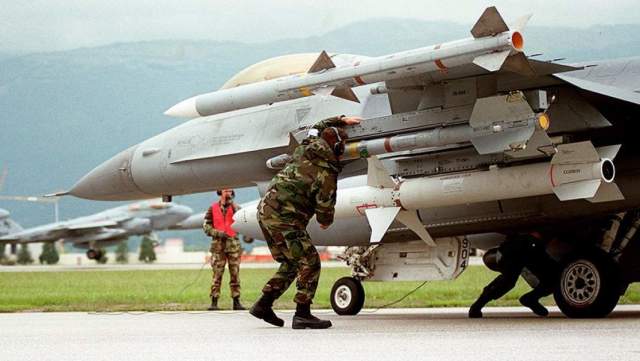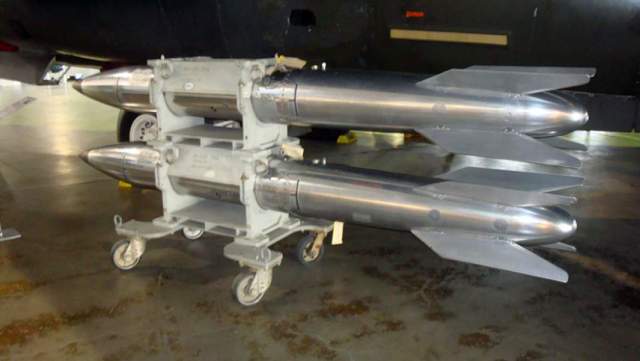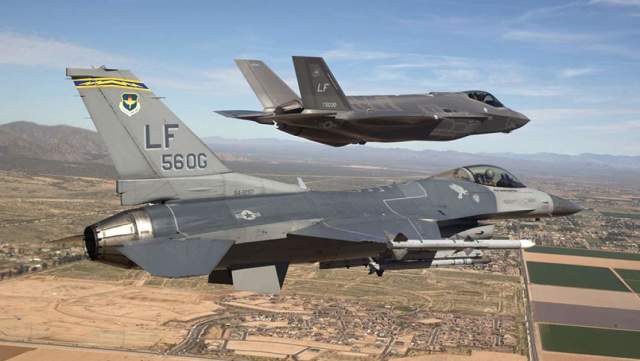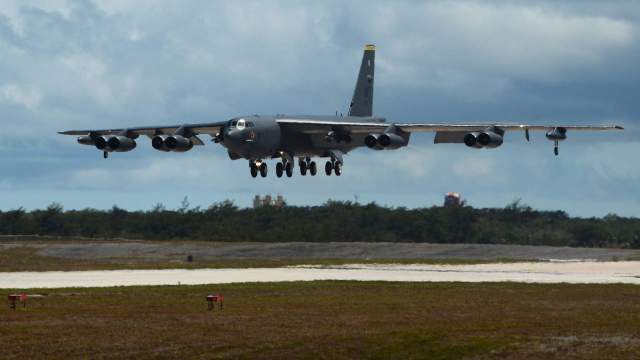And will Russia react to the "Persistent Noon" maneuversOn Friday, October 14, NATO said that the bloc's nuclear deterrence exercises starting on October 17 "are not related to the ongoing world events."
At the same time, the alliance did not forget to remind that 60 aircraft from 14 countries, including B-52 strategic bombers and the latest fifth-generation fighters, will take part in them. The maneuvers, dubbed "Steadfast Noon" (Steadfast Noon), will be conducted at a distance of about 1000 km from the Russian borders. Izvestia was looking into what they would be working on and what kind of threat, given the current situation in the world, they could pose to Russia.
Dangerous tours
The current nuclear maneuvers of the NATO bloc did not come as a surprise. The "Persistent Noon" exercises have been held regularly in the autumn months for several years in a row. The current round of them was planned long before Russia launched a special military operation on the territory of Ukraine on February 24 this year. It is known that they will be held from October 17 to October 30. Of this period, about a week will be allocated for practical flights at the training grounds in Belgium and the UK. In total, up to 60 aircraft will be involved, including strategic bombers, fighters, reconnaissance aircraft and air tankers from 14 countries.
"These are routine exercises, and they are solely related to combat readiness," British Defense Minister Ben Wallace said on October 13. — The alliance's job is to make sure that all 30 partners together are ready for what may come down on us. And we need to continue working on this."
It is worth explaining that NATO itself does not possess any stock of nuclear weapons, but the alliance includes several countries with national nuclear arsenals - the United States, Great Britain and France. They are the ones who have their own atomic weapons today and remain the main shareholders in the NATO Atomic club. If necessary, the planning of the use and the very use of these nuclear arsenals can be coordinated by NATO headquarters and become a joint combat operation of nuclear and non-nuclear members of the North Atlantic Alliance.

A technician prepares an F-16 fighter jet for departure at the Aviano Air Base in Italy
Image Source: Photo: commons.wikimedia.org
The need for exercises by the leadership of the alliance is justified by the fact that the forces intended for the probable use of atomic munitions must be trained and maintained in a state of high combat readiness. Moreover, we are talking not only about the forces of the countries of the "nuclear club", but also about the units of non-nuclear countries. Of course, it is stated that real nuclear munitions will not be used in the exercises, but only exclusively training neutral samples. Probably, the main purpose of all these statements is to calm their own public opinion, which, of course, has strained from the nuclear news of recent days and the frequent statements about the possible use of nuclear weapons at the highest level.
What kind of weapons are we talking about? The main "sports projectiles" of the "Persistent Noon" exercises have been American B61 atomic bombs of various modifications stored at Ghedi and Aviano air bases in Italy for several years in a row. In the past, Dutch multi-purpose F-16 fighters and German Tornado fighter-bombers, together with which Italian aircraft of the same type worked, practiced with these ammunition. F-16 fighters from the USA and Belgium and Czech multipurpose Gripen also took part in the maneuvers.
The organization of interaction of various aviation forces is the basis of the goals and objectives of the exercises. But now a new player is gradually beginning to take a leading position in this variety of strike aircraft — the fifth-generation fighter F-35, which, being a potential carrier of American atomic bombs, is already entering service in many European countries. It is believed that thanks to their modern digital sights, the accuracy of atomic bombing with the F-35 is comparable to the use of "smart" ammunition.

B61 thermonuclear bombs ready to be loaded into an airplane
Image Source: Photo: commons.wikimedia.org
There is no talk that the United States plans to withdraw atomic bomb stocks from Europe, and the "Persistent Noon" exercises just remind that the aircraft of the air forces of all the countries of the bloc should be able to use atomic bombs. Usually, during the exercises, the issuance of bombs from closed arsenals, suspension for aircraft, obtaining data on targets and flights to landfills with mock bombs for testing the dumping of deadly cargo are practiced.
Untimely maneuver
Of course, in conditions when real military operations are taking place over the territory of Europe with the use of aviation, artillery, missile systems, any near-atomic activity in the West causes serious concern. Exercises of nuclear forces are always a risky event, and in the conditions of hostilities with the nearest neighbors, it looks like playing with fire in a fuel and lubricants warehouse. In the end, they could have waited with their own nuclear deterrence forces. There would be less tension and risk of moving from words to deeds in matters of the actual use of nuclear weapons. It is a little reassuring that the exercises, in fact, concern only tactical nuclear weapons and do not affect strategic nuclear deterrence systems — long-range ballistic and cruise missiles of sea and air basing.
How will Russia react to such exercises? The statement of our Foreign Ministry has already been made, and it indicates both concern and bewilderment about such persistent adherence to previously agreed plans. But in any case, Russian national intelligence assets will closely monitor the progress of the exercises in Europe. With the help of space intelligence tools, we will be able to track both the activity of aviation flights and the intensity of radio exchange of participants in maneuvers. We will be able to compare the current exercises with those that were earlier, and identify changes and innovations, if there are any. It will be especially interesting to trace the participation of potentially new members of the North Atlantic Alliance in the exercises. Officially, the composition of the participants of the atomic games has not changed yet, but it would be logical to see both Sweden and Finland there. Even if this time their participation is limited only to personnel and not aircraft, it will be a serious step from a nuclear-free status to confrontation with Russia.

F-35 and F-16 fighters in flight
Image Source: Photo: commons.wikimedia.org
Russia itself has not conducted any nuclear exercises for several months. This looks completely justified in the conditions of a special operation, and there was probably hope for some mutual understanding, which, as we see, did not work out. We could also deploy nuclear warheads for the purpose of training and training, for example, in the Kaliningrad region. It is not difficult to imagine what kind of reaction this will cause abroad. But the strategic carrier bombers temporarily deployed in the Arctic at the Olenya Airbase will be enough to demonstrate both the degree of combat readiness and the possibility of dispersing the nuclear strike forces of Russian long-range aviation.
Dmitry Kornev

